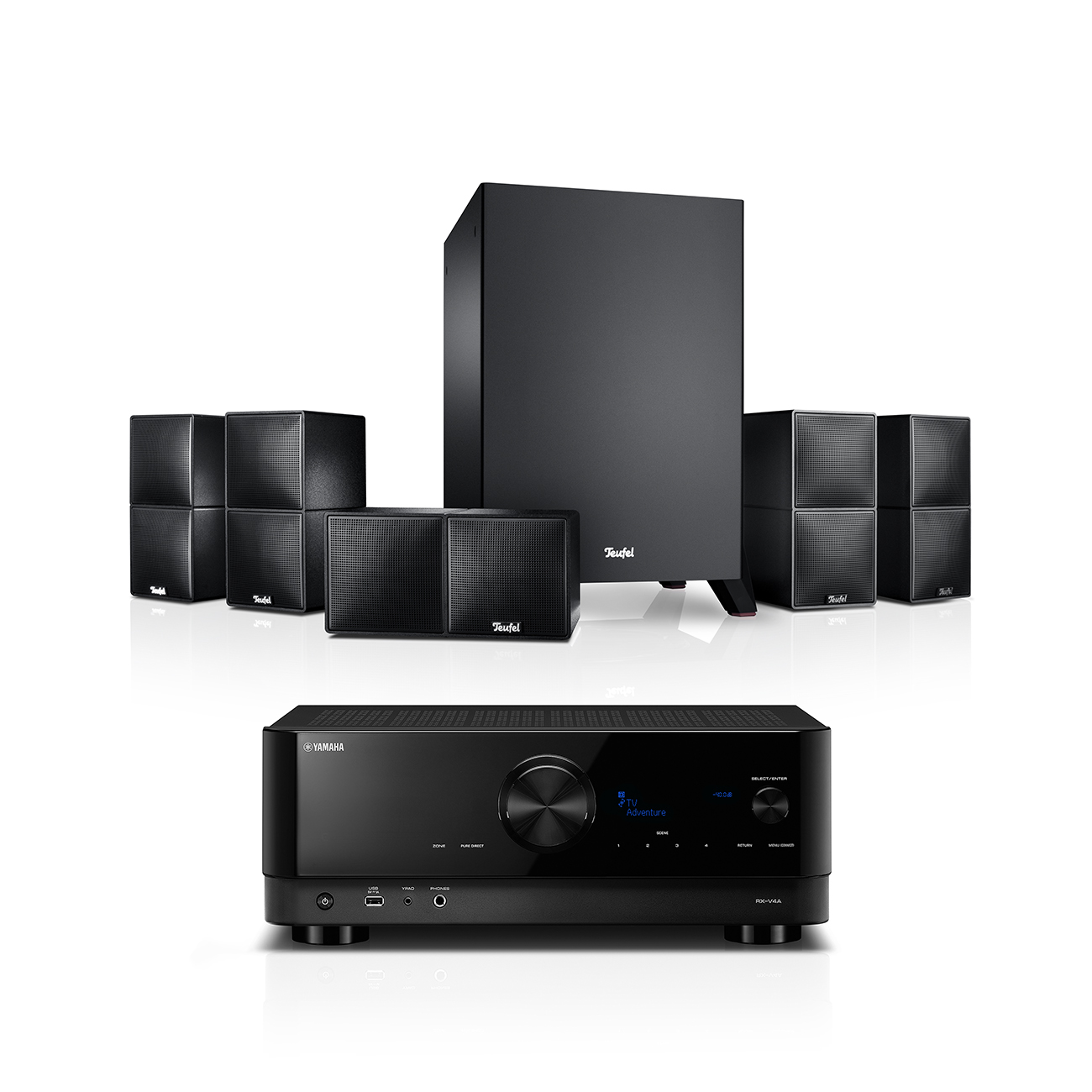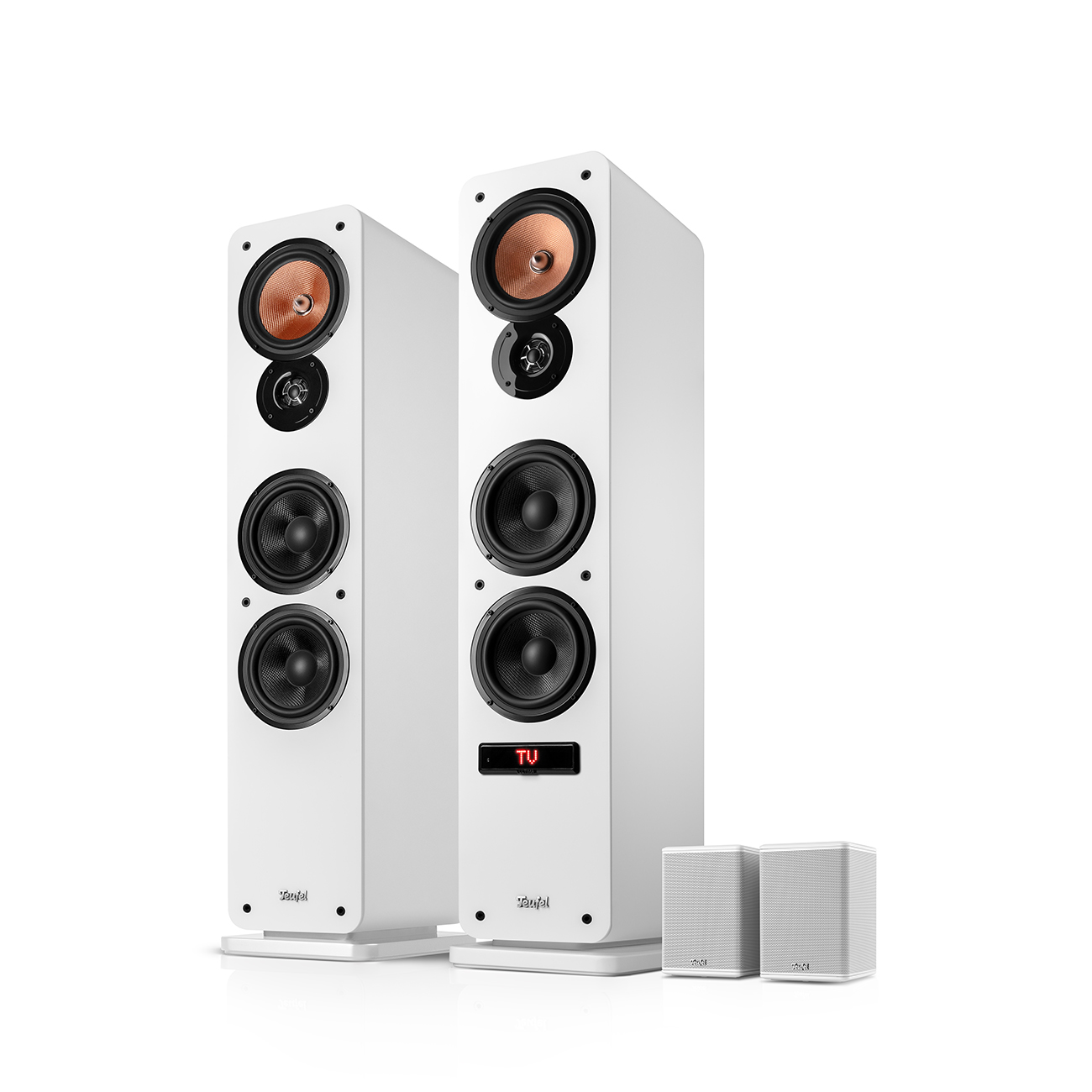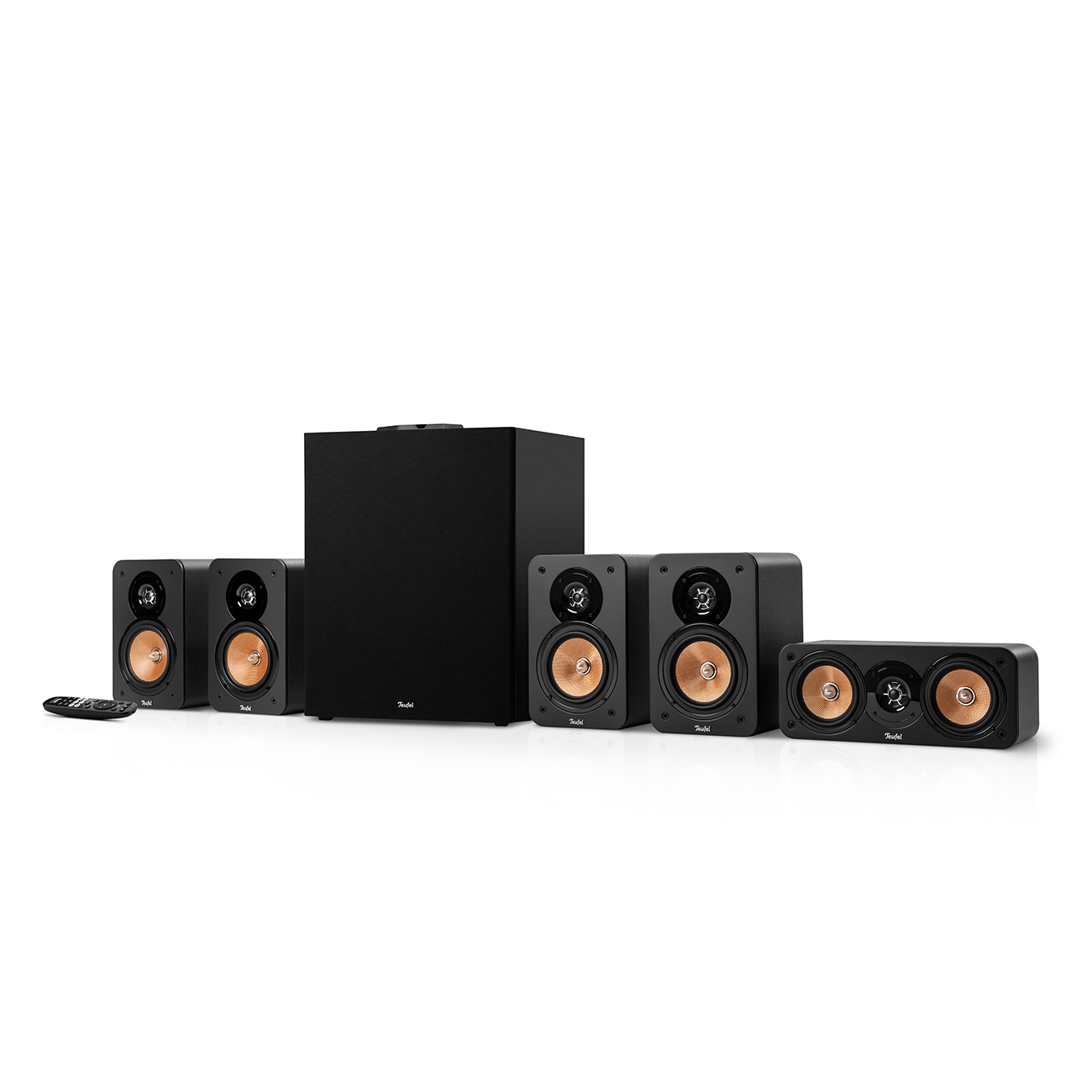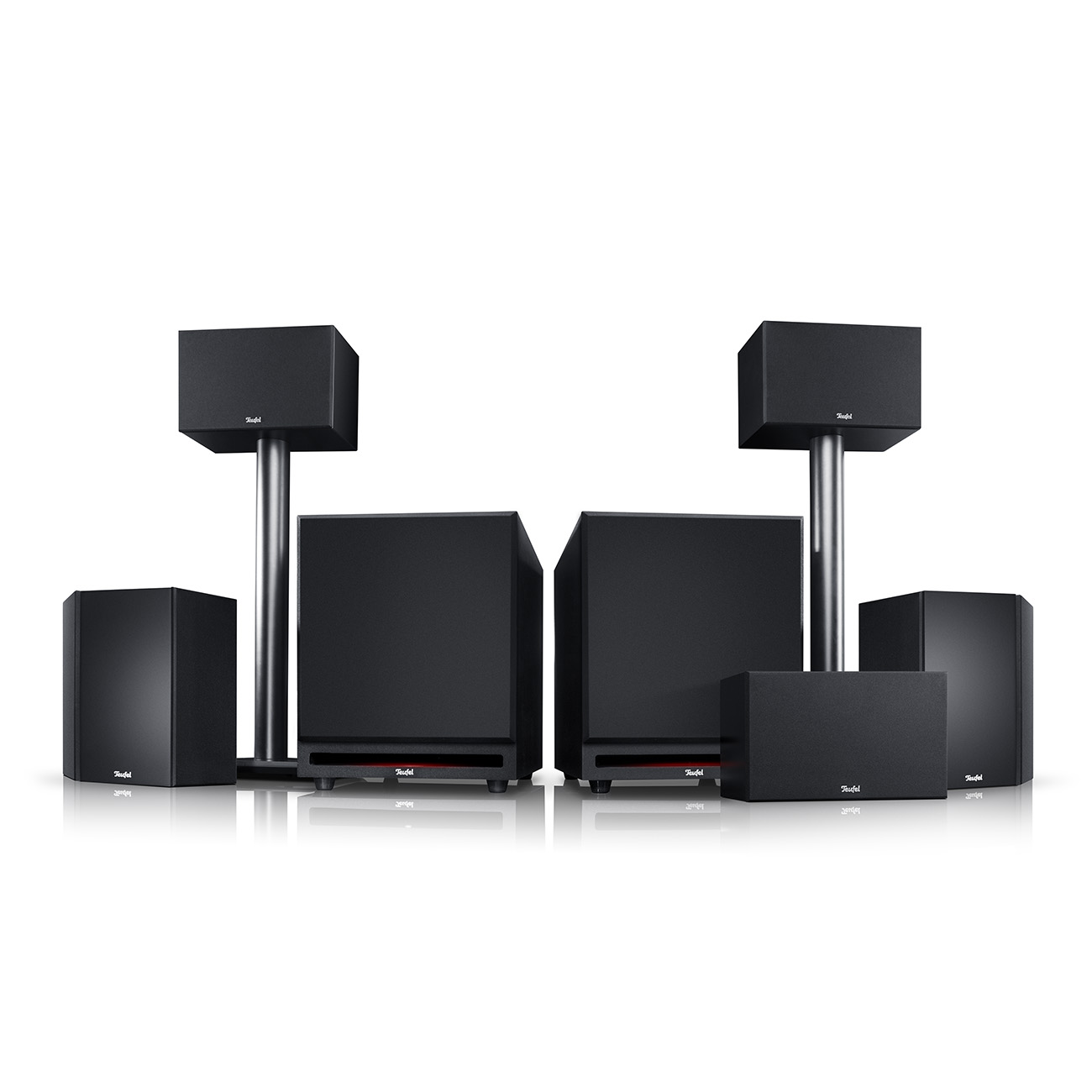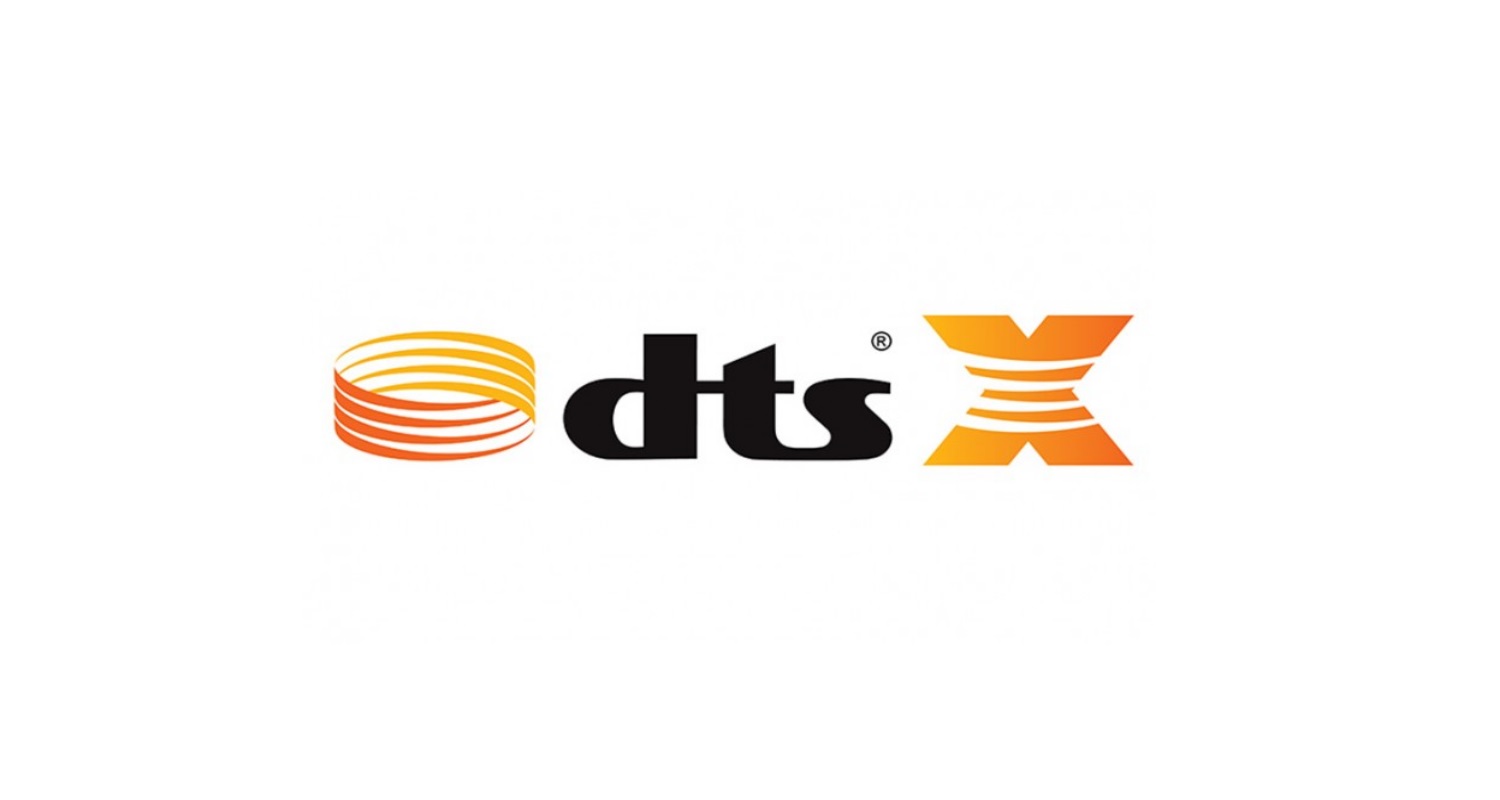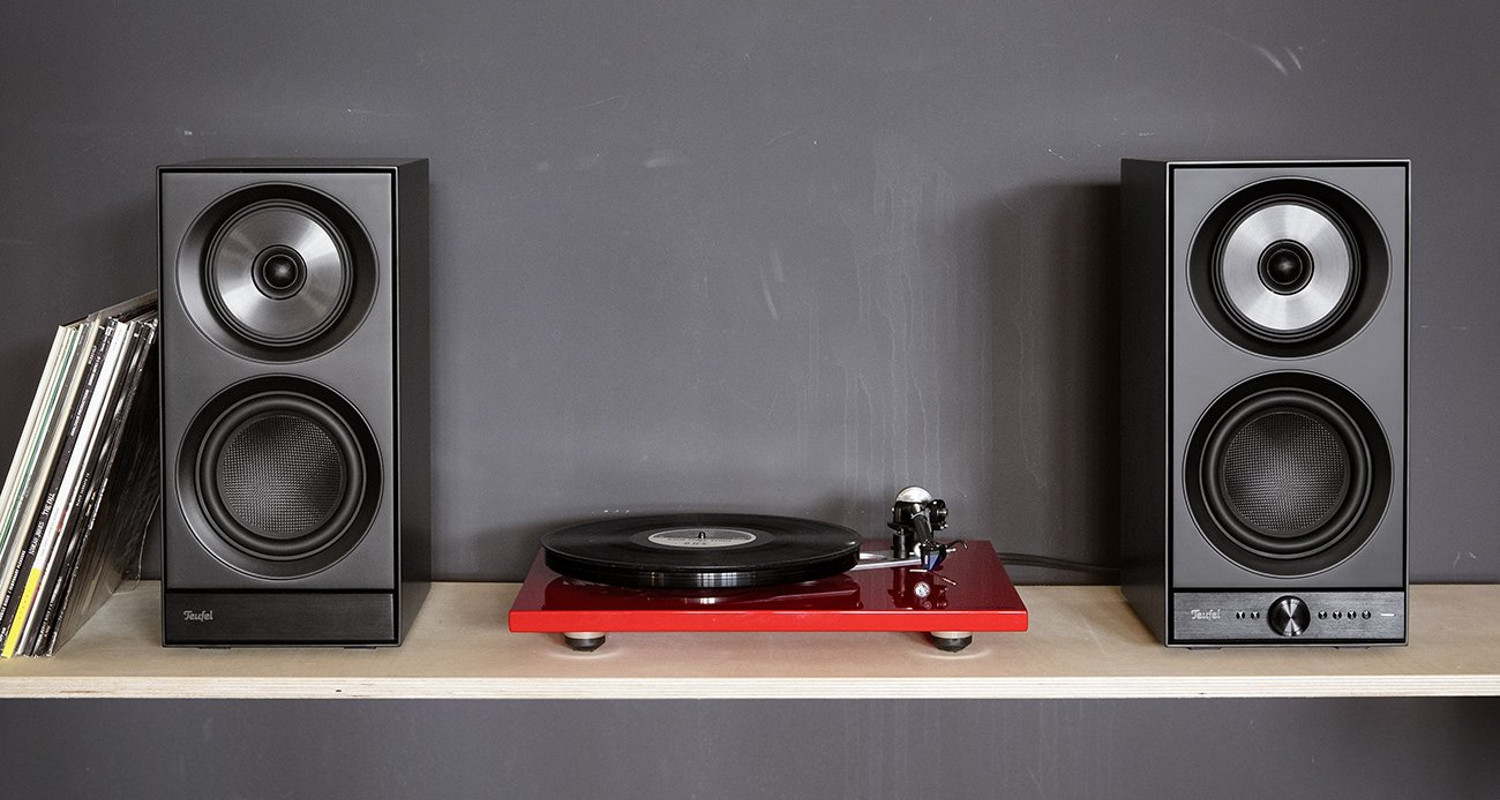“Hi-Fi” and “home cinema” are terms that are commonly used in the audio sector, however it may not always clear what is actually meant by them. Let us explain the basic concepts. By way of introduction, it is important to keep in mind that “Hi-Fi” refers above all to the reproduction of music and “home cinema”, as the name suggests, to film sound.
The Hi-Fi system as the basis for music playback
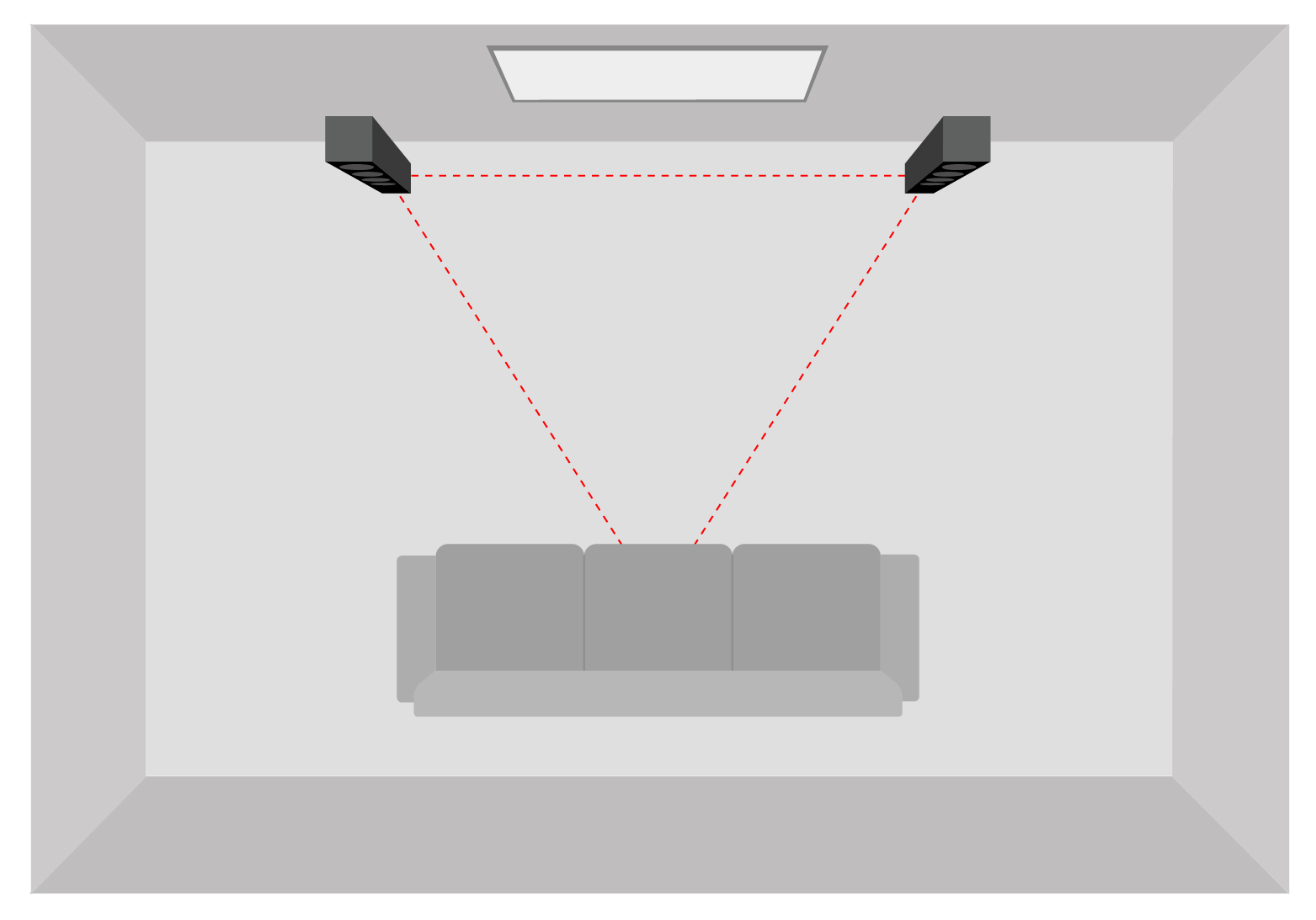
A Hi-Fi system essentially consists of a CD or network player, an amplifier and two identical speakers for playback. This setup creates stereo sound and ideally covers all frequencies of the input signal. If the Hi-Fi system is properly tuned and of appropriate quality, a spatial sound stage can be created. When setting up the system, you can follow the rules of the sweet spot and stereo triangle.
On the other hand, a home cinema system includes a subwoofer, which reproduces the bass frequencies, and up to nine other speakers. The large number of speakers is intended to cover the listening area from all sides – creating surround sound. Equipment for Dolby Atmos and comparable 3D formats can include even more speakers.
Home cinema systems: more channels, more tuning
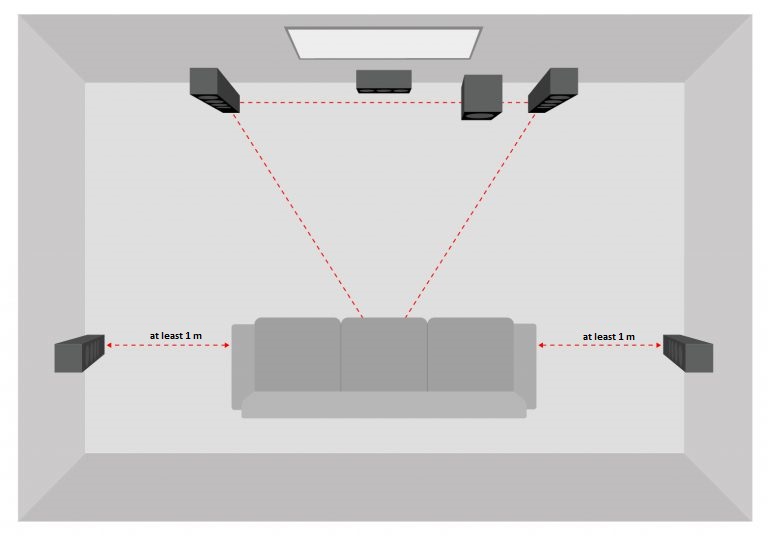
Home cinema systems have to be “tuned” twice. For the centre, front and effect speakers, two or three different sound converters for different frequency ranges are usually installed – so-called two- or three-way speakers. The precise matching of these woofers and tweeters to each other is not an easy task: the developer has to ensure that the bass driver matches the mid-range and tweeter perfectly in volume and phase. Only then can an absolutely linear frequency response be guaranteed.
With home cinema systems, adapting the woofer – in most cases a separate subwoofer – to the rest of the system is far more difficult. Unlike a stereo system, woofers must not only be tuned to two mid-range tweeters, but must also harmonise with the main left and right speakers, the centre speaker and the two rear effect speakers.
Ready-to-play home cinema systems from Teufel
Crossover frequencies for bass in home cinema systems
As mentioned above, speakers in home cinema systems have to meet different requirements depending on the frequency assigned to them. The allocation of the frequencies played back is controlled by the AV receiver via the crossover.
In a home cinema system, it is essential to match the amplifier settings to the characteristics of the speakers. This example illustrates the problem. A speaker manufacturer separates the frequency range of its satellite subwoofer system at 100 Hz with an edge steepness of 18 dB. Frequencies below 100 Hz are therefore routed to the sub, and everything above – to the satellites. So far, so good.
However, if this speaker set is connected to an amplifier, and the subwoofer output of which is designed for a crossover frequency of 90 Hz with an edge steepness of 24 dB, the connection values simply do not match. Because there is no standardisation, manufacturers of AV receivers and speakers enjoy – to put it bluntly – a certain freedom to play around. While a deviation of the crossover frequency from 80 to 90 Hz may still be justifiable, the usual differences of 200 to 80 Hz, for example, can cause drastic errors in bass reproduction.
The THX® standardisation puts an end to this issue. All devices and speakers bearing this seal of approval have standardised connection values, so that the customer only has to switch to THX® and can be sure that amplifiers, subwoofers and satellites are perfectly coupled.
THX certified Teufel systems
Mixing of film soundtracks especially for large cinemas
There are other important differences between Hi-Fi systems and home cinema systems. Hi-Fi sound for CDs is mixed in the recording studio in such a way that the music sounds optimal where it is most often heard: in living rooms. Film soundtracks such as the laser disc, DVD or Blu-ray disc, on the other hand, contain the original film soundtracks. These are mixed for playback in large cinemas.
While the audience in the cinema is far away from the front speakers, the distances in a realistic home cinema are relatively small. In living rooms, sound waves are dampened less than they are in cinemas by the many chairs and audience members. In addition, the front speakers in the cinema are often concealed by the movie screen. All these factors are taken into account when mixing film sound. Loudspeakers and AV receivers must take into account the different conditions of a home cinema and reproduce the original material in a modified form. Teufel’s THX® speakers allow movies to be heard just as the sound engineer intended, from the comfort of your own home.
This guide provides detailed information on the correct speaker setup of home cinema systems.
Conclusion: tuning is the key
- A Hi-Fi system is usually defined as a stereo system consisting of two identical loudspeakers and a playback device.
- Home cinema systems consist of at least six speakers (5.1) and reproduce surround sound.
- Home cinema systems require a precise balance between receiver cut-off frequency and speaker characteristics.
- THX® standardisation ensures that the receiver and speaker are perfectly matched to on another.
